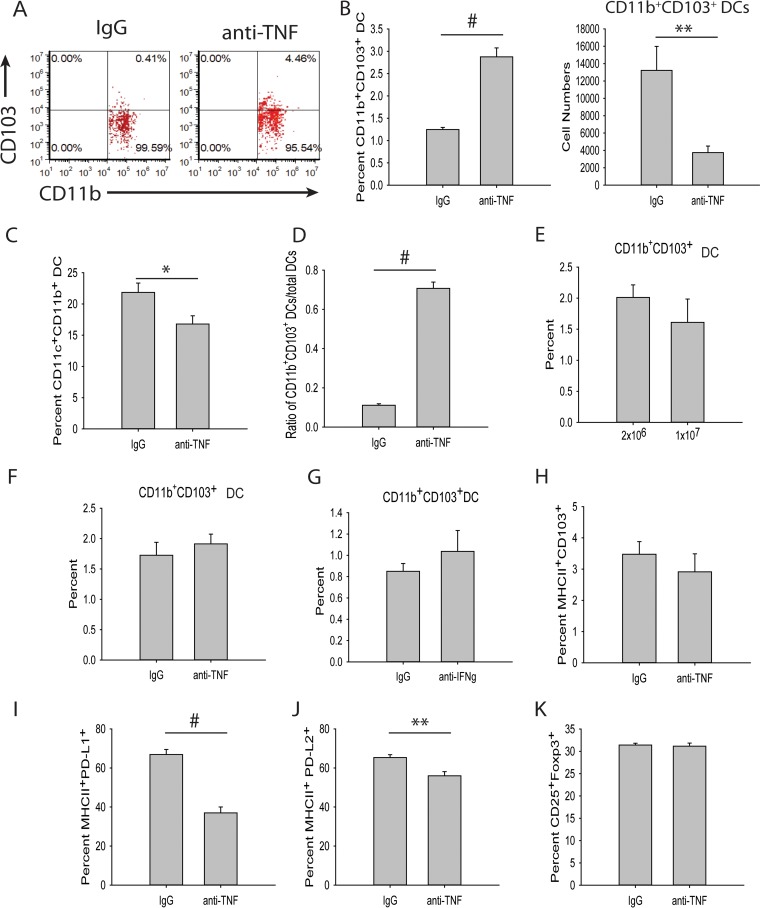FIG 3.
CD11b+ CD103+ DCs induce Tregs. (A to D) Mice were infected with 2 × 106 H. capsulatum yeasts i.n. and treated with anti-TNF or isotype control antibody. Lungs were harvested at day 3 p.i. and assessed for DC populations by FACS. The DCs were gated on CD11c+ CD11b+ MHC-II+. (E) Mice were infected with 2 × 106 or 1 × 107 H. capsulatum yeasts i.n. Lungs were harvested at day 3 p.i., and DCs were assessed by FACS. (F and G) Mice were treated with anti-TNF (F), anti-IFN-γ (G), or isotype control antibody. Lungs were harvested 3 days after treatment, and DCs were assessed by FACS. The data represent means and SEM (n = 8 mice/group; representative of the results of two experiments). (H to J) Mice were infected with 2 × 106 H. capsulatum yeasts i.n. and treated with anti-TNF or isotype control antibody. Lungs were harvested at day 3 p.i. and assessed for DC populations by FACS. The DCs were first gated on CD11c+ MHC-II+. (I) Mice were infected with 2 × 106 H. capsulatum yeasts i.n. and treated with anti-TNF or isotype control antibody. Lungs were harvested at day 3 p.i., and CD11c+ CD11b+ MHC-II+ CD103− DCs were assessed by FACS. Cells were cocultured with splenic CD4+ CD25− Foxp3− T cells from uninfected Foxp3-GFP mice in the presence of 1 μg/ml anti-CD3, 5 μg/ml anti-CD28, 3 ng/ml TGF-β, and 5 ng/ml IL-2. Lungs of 4 mice were pooled for each experiment. The data represent means and SEM of the results of 3 experiments. *, P < 0.05; **, P < 0.01; #, P < 0.001.

